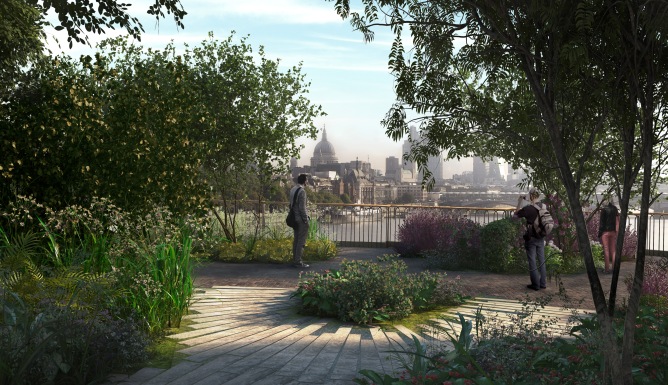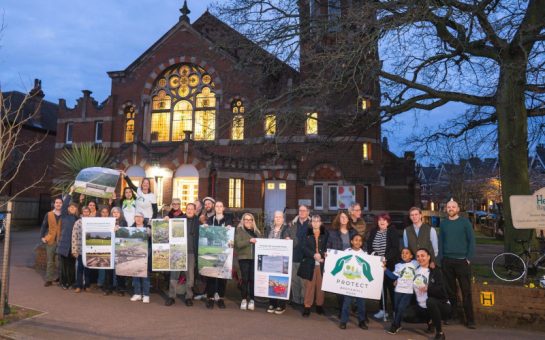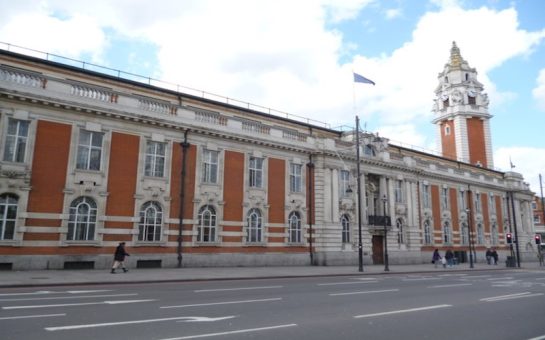Controversy is building over Joanna Lumley’s Thames Garden Bridge, a ‘floating garden paradise’ over the river that critics say will become another tourist attraction instead of a transport treat.
The idea for the green walkway was conceived by the Ab Fab actor and designed by British architect Thomas Heatherwick, who also designed the new Routemaster buses.
The bridge, which will be covered in trees and gardens, will link Temple with the bustling Southbank and is backed by Lambeth and Westminster councils.
Joanna Lumley said she envisioned the bridge to be ‘a safe and swift way for the weary commuter to make his way back over the Thames’.
Restrictions may be placed on the bridge that cast doubts over whether it will serve as a functioning bridge for commuters or become a tourist hotspot.
Green Party representative Darren Johnson criticised the development and compared it to the river cable car implemented by Mayor Boris Johnson.
He said: “The cable car was meant to help commuters get across the river, but got turned into a tourist attraction by the Mayor. This looks increasingly like another of the Mayor’s high profile, tourism projects funded from tube and bus fares.”

Darren Johnson recently asked the Mayor to guarantee the bridge’s use for the public, now and in the future however he has not done so yet.
He said: “I was really shocked to discover that this bridge is receiving £60m from the joint transport budgets of the Mayor and the national government, but the public have no guaranteed right of way.
“Central London is a 24 hour city, but under the current proposals there is effectively no bridge for at least a quarter of the day.
“Given the scale of public funding for this bridge I would have expected the Mayor to have pinned down guarantees that Londoners will be able to use this bridge to cross the river 24/7 in ten or twenty years’ time.”
At present the total cost is estimated at £159m, £60m of which will come from public funding with TfL and the Treasury both pledging £30m.
Bee Emmott, Executive Director of the Garden Bridge Trust, said the bridge’s location was assessed to increase pedestrian movement across the river.
Unlike the rest of the capital’s bridges, it is planned that the Garden Bridge will shut between midnight and 6am.
Groups of eight or more people must also apply in advance to cross the bridge, according to Lambeth Council’s planning report, sparking rumours that this measure is to restrict protests in the capital.
However, a spokesperson for the Garden Bridge Trust, Jessie Mangold, said this is a figure the organisation is required to provide as part of the planning application and in no way relates to protesters.
Members of the public have expressed concern that the bridge is running the risk of becoming yet another ticketed tourist attraction, despite half of the project being funded by taxpayers’ money.
Despite the speculation the Garden Bridge Trust said there will be no charge if people wish to use the bridge and also disputed rumours that picnics will be disallowed.
A petition was started on change.org in August, calling for either a relocation of the bridge or scrapping of the project altogether, and already has 1000 signatures.
More than 30 trees and green space will also have to be destroyed to allow for building work.
Lambeth Council remain positive that the bridge will benefit both the local and wider London economy.
A council spokesperson said: “The Garden Bridge idea is creative and ambitious with the potential to become an attractive landmark at Waterloo.”
Images courtesy of Arup, with thanks




